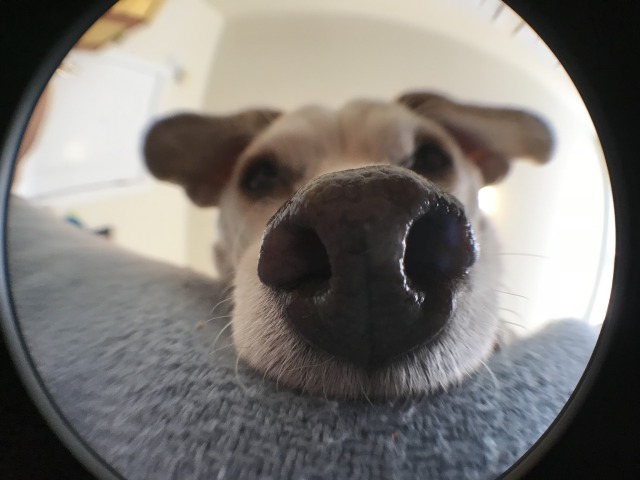

DOG FISHEYE LENS FULL
3.2 Noteworthy fisheye lenses for 35 mm full frame cameras.3.1 Noteworthy fisheye lenses for APS-C cameras.2.5 Portrait or cropped-circle fisheyes.In everyday life, they are perhaps most commonly encountered as peephole door viewers to give a wide field of view. They are also used for scientific photography, such as recordings of aurora and meteors, and to study plant canopy geometry, and to calculate near-ground solar radiation. For digital cameras using smaller imagers such as 1⁄ 4″ and 1⁄ 3″ format CCD or CMOS sensors, the focal length of "miniature" fisheye lenses can be as short as 1–2 mm.įisheye lenses also have other applications, such as re-projecting images originally filmed through a fisheye lens, or created via computer-generated graphics, onto hemispherical screens. For the popular 35 mm film format, typical focal lengths of fisheye lenses are 8–10 mm for circular images, and 12–18 mm for diagonal images filling the entire frame.

Mass-produced fisheye lenses for photography first appeared in the early 1960s and are generally used for their unique, distorted appearance. Their focal lengths depend on the film format they are designed for. The angle of view of a fisheye lens is usually between 100 and 180 degrees, although lenses covering up to 280 degrees exist (see below). : 145 Their first practical use was in the 1920s for use in meteorology to study cloud formation giving them the name "whole-sky lenses". Wood based on how a fish would see an ultrawide hemispherical view from beneath the water (a phenomenon known as Snell's window). The term fisheye was coined in 1906 by American physicist and inventor Robert W. Chromatic aberration can clearly be seen toward the outer edges. Circular fisheye photograph of Oude Kerk Amsterdam.


 0 kommentar(er)
0 kommentar(er)
